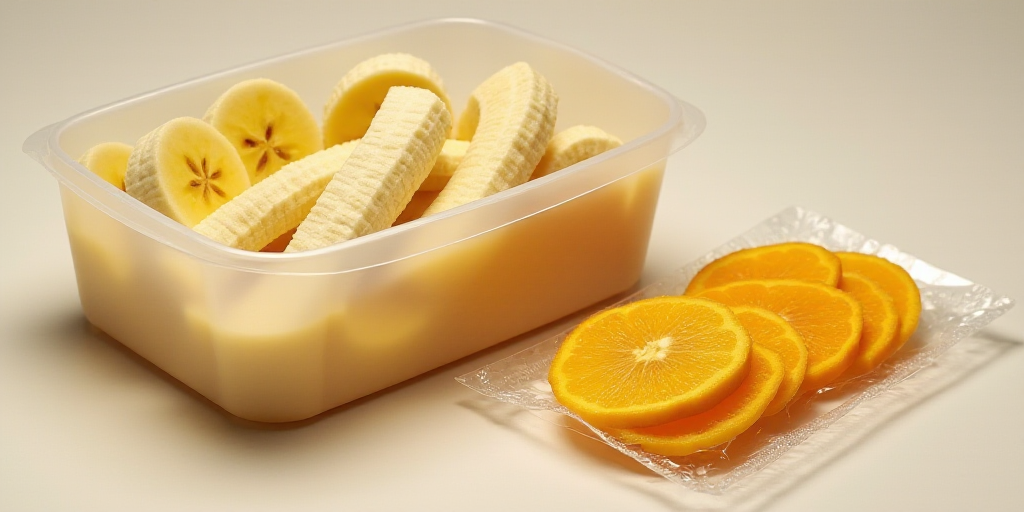Introduction
For decades, food labeling has been a crucial yet limited tool: text printed on paper or plastic that informs about ingredients, expiration dates, and nutritional data. Today, this function is being surpassed by a new generation of smart labels that not only communicate but interact, detect, verify, and alert.
The Driving Forces Behind the Change
This technological leap is driven by a confluence of factors: more demanding consumers, stricter international regulations, and growing environmental sustainability concerns. In this new scenario, labels transform from passive accessories to key components of traceability, quality control, and logistical efficiency.
Smart Sensors: Real-Time Freshness
One of the most transformative developments has been the integration of sensors within labels. These small devices can monitor variables such as temperature, humidity, pH, or the presence of gases, offering real-time readings on product conditions.
Time Temperature Indicators (TTI) sensors, for example, are already used in refrigerated products in Latin America to indicate if the cold chain has been interrupted. In meats, fish, and dairy products, this can mean the difference between a safe food and one that’s potentially risky. Some labels can even detect oxidation or adulteration, helping prevent fraud in premium products like oils or wines.
Biomaterials: Sustainability from the Label
Parallel to the rise of sensors, a quieter yet equally powerful revolution is taking place: the use of biomaterials to replace conventional plastics.
Cellulose, PLA (poly lactic acid), starch, and quinoa are some materials enabling the production of biodegradable, food-compatible labels. These materials not only have a positive environmental impact but also offer functional properties: they are flexible, printable, and in some cases, even conductive, making them compatible with electronic technologies.
According to Grand View Research, the biomaterials market for food packaging is expected to grow at an annual rate exceeding 10% until 2030, driven by the new demands of smart labeling.
Connected Traceability: From Farm to QR Code
Smart food labeling has also shifted towards the digital. Technologies like blockchain, RFID (radio-frequency identification), QR codes, or NFC (near-field communication) connect product data with global traceability systems.
This not only enhances transparency for consumers but also reduces response times to health issues and improves logistical efficiency. For exporters and producers in Latin America, having connected labels can mean preferential access to markets requiring certified traceability, such as the European Union or the United States.
Regulation Driving Innovation
The evolution of food labeling is not just technological; it’s also regulatory. According to the report, organizations like the FDA (US), EFSA (EU), and COFEPRIS (Mexico) are setting more precise requirements on sensor use, materials, and claims in food labeling.
There are also global harmonization initiatives to facilitate digitalization, especially in Latin America, where front-of-package labeling has been adopted but demands for food transparency continue to expand.
Challenges and Collaboration
Adopting these technologies isn’t without challenges. The report details technical and economic obstacles: from high implementation costs and the need to adapt existing packaging lines, to technical training and sensor data validation.
Therefore, active collaboration between the industry, academia, and public innovation policies is crucial to build scalable, accessible, and reliable solutions.
According to Zion Market Research, the smart label market is projected to surpass $20 billion by 2030. The report asserts that their impact won’t be just economic but structural: contributing to a more efficient, predictable, and sustainable food chain.
Key Questions and Answers
- What are smart food labels? Smart food labels are interactive, not just informative. They use sensors to monitor conditions like temperature and humidity, offering real-time data on product freshness.
- Why are biomaterials important? Biomaterials like cellulose and PLA enable the creation of biodegradable, food-safe labels. They also offer functional properties like flexibility and conductivity, making them compatible with electronic technologies.
- How do digital technologies impact food labeling? Technologies like blockchain, RFID, QR codes, and NFC connect product data with global traceability systems, enhancing transparency and logistical efficiency.
- What regulatory changes are driving innovation? Regulatory bodies worldwide are setting stricter requirements for sensor use, materials, and claims in food labeling, driving innovation.
- What challenges exist in adopting smart food labels? Challenges include high implementation costs, the need to adapt packaging lines, technical training, and sensor data validation.






